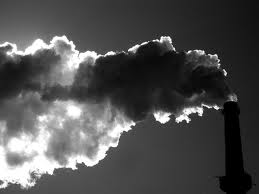Luisa Cristini, PhD, University of Hawaii at Manoa
[Note from the editor: This is the seventh in a series of blog entries that will focus on introductory topics in climate dynamics and modeling, and will be a great insight into the current understanding of the science.]
 The carbon cycle is the biogeochemical cycle by which carbon is exchanged among the different components of the Earth’s system: biosphere, geosphere, hydrosphere, and atmosphere. It is one of the most important cycles of the Earth and allows for carbon to be recycled and reused throughout the Earth’s system.
The carbon cycle is the biogeochemical cycle by which carbon is exchanged among the different components of the Earth’s system: biosphere, geosphere, hydrosphere, and atmosphere. It is one of the most important cycles of the Earth and allows for carbon to be recycled and reused throughout the Earth’s system.
One of the major changes brought by human activity is the large increase in the atmospheric concentration of carbon dioxide (CO2) and methane (CH4). The concentration of carbon dioxide has increased from around 280 ppm (parts per million) in the year 1800 to over 390 ppm at present [http://www.esrl.noaa.gov/gmd/ccgg/trends/history.html]. CO2 is relatively stable and homogeneous, so that its concentration in the atmosphere is nearly equal away from zones where strong exchanges with the biosphere occur (e.g., over forests).
Methane (CH4) is more reactive than carbon dioxide (CO2) and can be oxidized to form CO2 and water (H2O). Its concentration is lower than that of CO2, but it has increased from 725 ppb (parts per billion) to 1780 ppb in 150 years. Methane is naturally produced by the breakdown of organic matter in lakes and swamps. It is also released into the atmosphere by human activities such as mining, biomass burning, and gas production, as well as the production of rice and by livestock, which produce methane as they digest grass.
The atmosphere is a relatively small reservoir of carbon compared to sedimentary rocks, the ocean and the terrestrial biosphere (which includes non-living organic material such as soil carbon). In particular, more than 50 million gigatons of carbon are stored in the Earth’s crust. This is more than 1,000 times the stock in the ocean, more than 20,000 times the stock in soil, and more than 50,000 times the stock in the atmosphere. However, the changes in the carbon concentration in sedimentary rocks are very small and the associated fluxes are much lower than those between the ocean, the atmosphere, and the soil.
Before the Industrial Era (i.e., before 1750), the exchanges between the various reservoirs were close to equilibrium. However, because of anthropogenic carbon release mainly related to fossil fuel burning and changes in land use (deforestation and agricultural processes), the flux of carbon into the atmosphere has increased dramatically. Up to this point, roughly 45% of the anthropogenic carbon released has remained in the atmosphere, which explains the observed rise in atmospheric CO2. The remaining fraction has been absorbed by the ocean (around 30%) or the terrestrial biosphere (around 25%).
The stability and longevity of CO2 within the atmosphere and ocean will have significant implications on the Earth system, as the resulting radiation imbalance from the enhanced greenhouse effect will alter the global climate for centuries and even millennia to come.
References
Goosse H., P.Y. Barriat, W. Lefebvre, M.F. Loutre and V. Zunz, (2012). Introduction to climate dynamics and climate modeling. Online textbook available at http://www.climate.be/textbook.
NOAA Earth’s System Research Laboratory, Global Monitoring Division (GMD), Carbon Cycle Greenhouse Gases Working Group (CCGG) Carbon cycle toolkit: http://www.esrl.noaa.gov/gmd/outreach/carbon_toolkit/basics.html

Comments are closed.